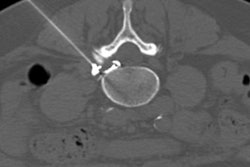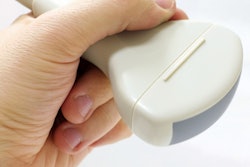
We wrap up our seven-part series on sonographer back pain by examining how lifestyle choices can impact our ability to live pain-free. The choices we make -- or don't make -- can often have a huge impact on how the back feels.
As we age into our 30s, 40s, and 50s, we face increased risk factors that contribute to a higher rate of back problems. How we approach these factors can play a significant role in how we can reduce back pain.
Our bone strength, muscle elasticity, and muscle tone start to decline as we get older. Research shows that as we age, the disks in the spine become less lubricated and less flexible, making them less capable of cushioning the vertebrae. The degeneration also can make the spinal canal narrower. All these can lead to low back pain. Lower back problems can also occur from a lack of exercise.
Too much weight
Overweight people have an increased risk for back pain. This is especially true for people who carry extra weight around the midsection. The extra load causes pelvic tilt -- usually forward pelvic tilt -- and this places high amounts of stress on the lower back.
Those who are overweight oftentimes experience radiating back pain such as sciatica and can also have low back pain from herniated disks or pinched nerves. This is caused by how the body moves. One form of the problem occurs as we compensate for improper movement patterns because of the extra weight.
We don't have to look like fitness models in a magazine to maintain a healthy weight, but we can reduce the risk of a bad back if we're able to carry our own weight. Eating right and moving properly not only helps with back pain, it also improves your overall health.
Sedentary lifestyle
This one is a double-edged sword. Because of a bad back that causes pain, we move less. With a lack of movement, back pain can be worse because of increased mobility issues. When we lose stability of muscles, they get weak. When we stop moving, not enough nourishment may get to our spinal disks, soft tissues, and ligaments. We already know that having great mobility and stability in all our muscles provides better support for the spine and joints of the body.
Sitting posture
If you've been following the series, you know we took the time to specifically talk about this topic in this series. If we can reduce the amount of sitting, we can help reduce our back pain or help eliminate existing pain.
To hit on the topic one more time, understand that most people sit in wrong way. Sitting forward or slouching down in a chair can overstretch the spinal ligaments and strain the disks and surrounding structures in the spine. Pushing the head forward can cause stress in the neck and upper back. Over time, poor posture, not following proper ergonomics, and not using proper equipment properly can contribute to back pain.
Stress
Most people are under stress. Because of the enormous stress level most of us experience, we need to find ways to handle the stress. When we can't manage stress and stress takes over control of us, it leads to poor sleeping habits, poor diet, and less exercise. With stress comes stress-related muscle tightness, usually in the neck, shoulders, and lower back area. This increases the problems in our back.
You can help prevent problems by finding ways to reduce stress, such as adding some simple stretches and movements during your stressful day (like the steps we included in the past six articles) and performing relaxation techniques and breathing exercises (such as in part 1 of this series). Even if you can only do it for few minutes a day, this can still help prevent back problems.
The right moves
When dealing with folks from around the globe, one of the key points we make is that it's not just about working out and doing anything. You have to do the right moves. Knowing how to move properly, stabilize properly, and improve range of motion through proper stretching is vital. If not, you might not help your back situation and may even make it worse.
To make sure you're moving correctly and using the right moves, please reach out to us and we'll be happy to help in any way we can. You can also go to www.coachrozy.com and look at our exercises we have posted, our videos (go to YouTube and search for "Coach Rozy"), or email us to get help.
Smoking
Experts say that smokers are nearly three times more likely to have low back pain than nonsmokers. According to researchers from the University of Michigan, the nicotine in cigarette smoke thickens the walls of the blood vessels. This restricts blood flow through the large and small blood vessels of the lower back and increases the healing and recovery time if you have a back injury.
Final comment
You can keep your back healthy and strong by doing some simple movements, easy stretches, and making some better lifestyle choices. You can lead a pain-free life and enjoy work and play.
It's often said that it's not what happens to you that determines your success in life, but it's how you handle what happens to you. As we always reiterate when we present, the things that need to be done are really quite simple. Yes, it's easy to know what to do, but hard to do it. It will take some time and effort on your part, but it will be worth it to live pain-free. And we are here to help.
Doug Wuebben is a registered echocardiographer and also a consultant, international presenter, and author of e-books in the areas of ergonomics, exercise and pain, and injury correction for sonographers. He has also been published on the topics of telemedicine and achieving lab accreditation.
Mark Roozen is a certified strength and conditioning specialist, a certified personal trainer, and a fellow of the National Strength and Conditioning Association (NSCA). He also consults, presents, writes, and works with groups, teams, and organizations around the world. He has been in the strength, conditioning, and performance field for over 30 years.
Wuebben and Roozen are co-founders of Live Pain Free -- The Right Moves. Email [email protected] or go to coachrozy.com for more information on programs, training, or speaking requests, or if you have any questions or comments.
The comments and observations expressed do not necessarily reflect the opinions of AuntMinnie.com.



















